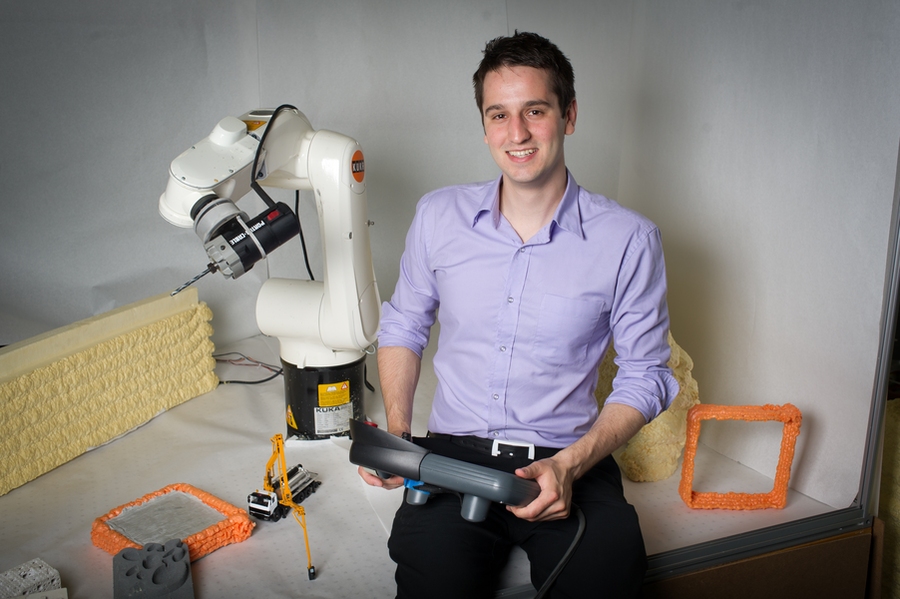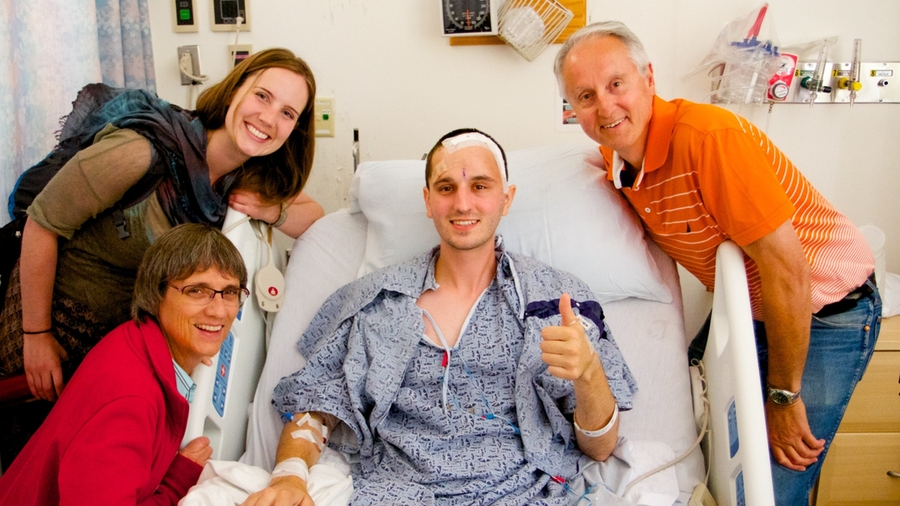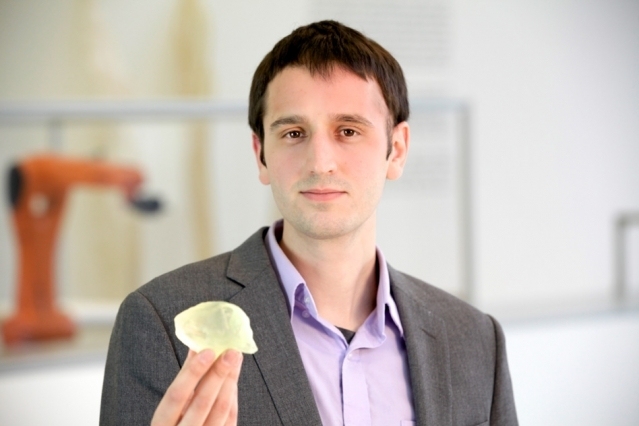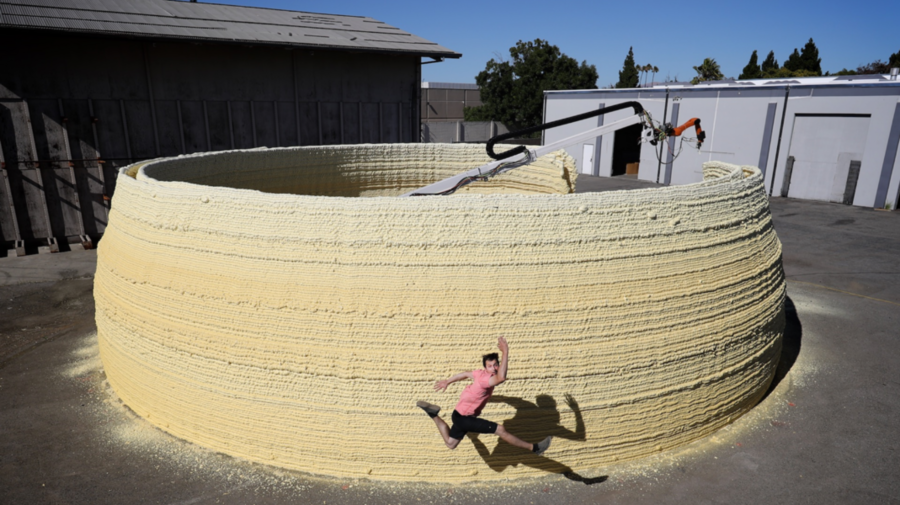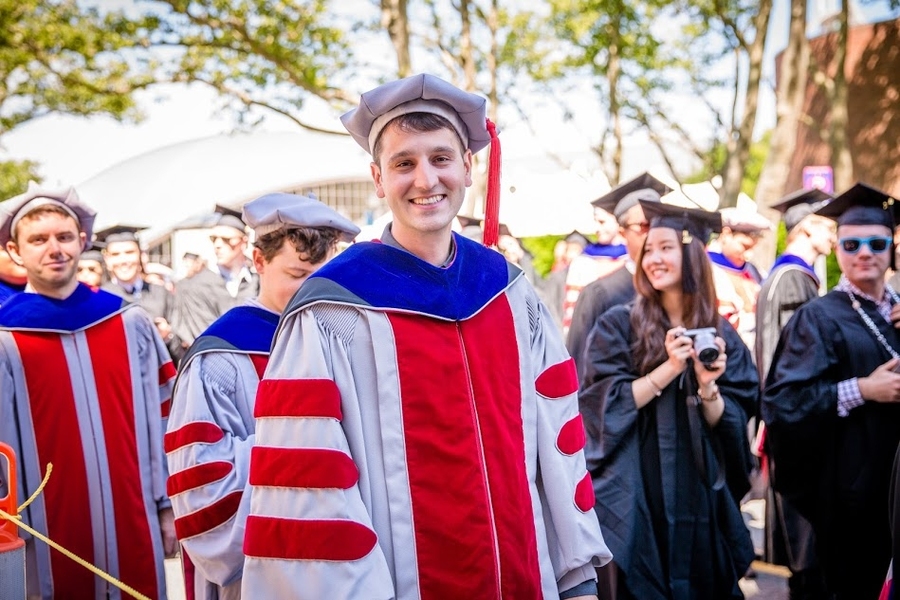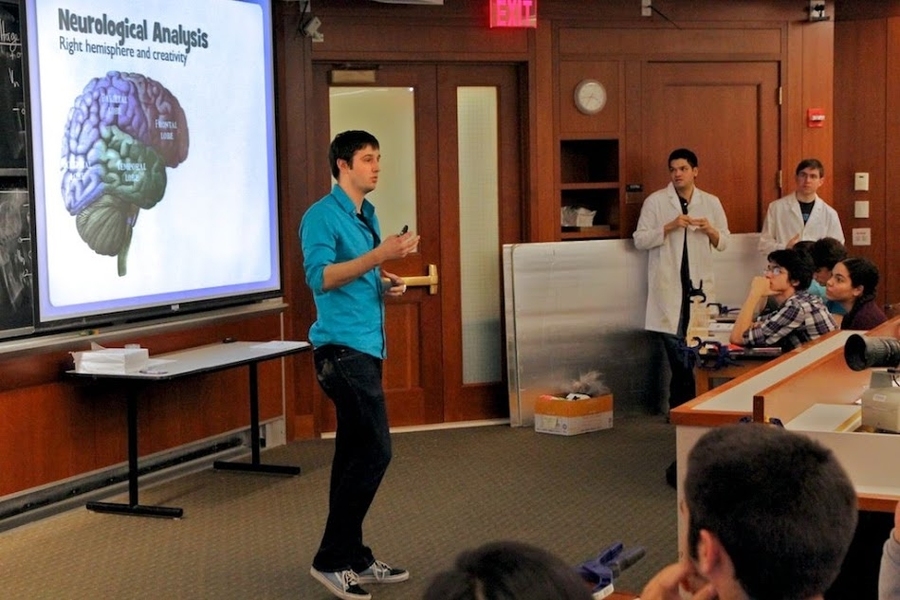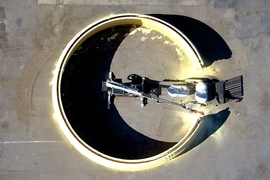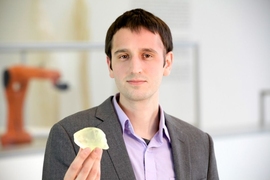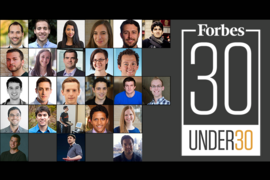Alumnus Steven John Keating SM '12, PhD '16 passed away from brain cancer on July 19 at the age of 31.
Keating received his master’s degree and PhD in mechanical engineering and was a member of the MIT Media Lab’s Mediated Matter team. He inspired countless people with his courageous, research-driven approach to battling cancer and was a champion for patient access to health data.
Curiosity was a driving force in Keating’s life. Growing up in Calgary, Canada, he spent a large portion of his childhood tinkering with and building devices. This predilection for making led to not only his love of engineering, but also his affinity for film and photography. As an undergraduate at Queen’s University in Kingston, Canada, Keating pursued his twin passions — earning a dual degree in mechanical and materials engineering alongside a degree in film and media.
In 2010, Keating fulfilled his lifelong dream of attending MIT and enrolled as a graduate student studying mechanical engineering. He joined the Media Lab’s Mediated Matter group under his co-advisor Neri Oxman, the Sony Corporation Career Development Associate Professor of Media Arts and Sciences.
At the Media Lab, Keating conducted research on additive manufacturing and synthetic biology. He pushed the limits of 3-D printing and developed a technology that could 3-D print the foundation of a building. This technology was recently acquired by NASA for potential applications in their pursuit of landing on the moon by 2024.
“Steve utilized humor while solving equations and inspired a sense of empathy when discussing ethical issues associated with robotics and synthetic biology,” Oxman reflects. “The projects he left behind are very much alive and will continue to have meaningful impact on the physical and societal landscapes we inhabit.”
In the Department of Mechanical Engineering, Keating served as a teaching assistant for the senior capstone class 2.009 (Product Engineering Processes), alongside his co-advisor, David Wallace, professor of mechanical engineering. He also helped teach the popular introductory course 2.00b (Toy Product Design) with Wallace.
“Steve had an infectious kindness and curiosity that elevated those around him, exploring simply for the joy and thrill of learning,” says Wallace. “His teaching contributions in our freshman toy product design and senior product engineering design classes made an enduring impact.”
Four years into his graduate studies at MIT, Keating’s world was turned upside down when a baseball-sized tumor was found in his brain. The innate curiosity that had brought him to MIT ultimately led to his diagnosis. In a 2014 speech at the Koch Institute, Keating recalled: “Curiosity is why we are here [at MIT] doing research, and ironically that’s how I found my tumor.”
As an undergraduate in 2007, Keating had participated in a brain study purely out of curiosity. His MRI scans revealed a small dime-sized abnormality located near the smell center of his brain. This knowledge prompted Keating to seek medical attention when, in the summer of 2014, he began smelling vinegar and getting headaches. A new MRI scan showed a low-grade glioma in the frontal left lobe of his brain that would require immediate surgery.
After receiving this news, Yoel Fink, professor of materials science and engineering, entered Keating’s life. Fink had previously developed a fiber optic scalpel that enabled minimally invasive surgery on brain tumors. As a result, he was connected to the top neurosurgeons in the world. Fink put Keating in touch with E. Antonio Chiocca, neurosurgeon-in-chief and chair of the Department of Neurosurgery at Brigham and Women’s Hospital in Boston. Chiocca performed the surgery to remove his tumor.
In an email to his friends and family in advance of the surgery, Keating wrote: “The world is a lovely, splendid, and fascinating place. But most of all, to me, it is beautifully curious.”
Keating proved to be anything but an average patient. “Steve confronted his disease like a true “MITer”: He studied it, researched it, applied his creativity and interest in the sciences and engineering to see how best to face this enemy,” explains Chiocca.
Ever the researcher, Keating craved every possible data point he could get about his diagnosis and treatment. Upon learning that accessing medical data required the approval of a medical doctor, he enrolled in an MD program while finishing up his PhD – earning him the nickname ‘MacGyver’ among his colleagues in the Media Lab.
Keating poured over footage of his 10-hour surgery, analyzed his own MRI scans, and had his microbiome sequenced. He even 3-D printed a model of his tumor, which he gifted his friends and family as a very unique Christmas ornament. This model led to a partnership with colleagues at the Media Lab and Harvard University to develop a new method to 3-D print more detailed models from medical images.
Keating collected 200 gigabytes of his own medical data. Given that knowledge of his own MRI scans and medical data led to his timely diagnosis, he became a staunch advocate for open-sourcing patient data. He wanted to empower patients to gain access to their own health information.
“Steve became a voice for patients’ desires to have access and own the data for their disease,” adds Chiocca. “He did this with humility, courage, joy and affability.”
Keating’s crusade on behalf of patients everywhere led to a New York Times article about his efforts in March 2015. His story was covered widely by the media and inspired millions of people. He gave a TEDx Talk about his experiences, joined the Federal Precision Medicine Task Force, and received an invitation to the White House by President Barack Obama.
“For him it was all about awareness — he was willing to give up his privacy and share his data with the world to advance the likelihood of an eventual cure for this disease,” says Fink, who along with Oxman remained close to Keating and his family throughout the years.
In remission thanks to the efforts of Chiocca and his team of doctors, Keating continued his work with Oxman in the Mediated Matter group. “Even and especially while battling cancer, Steve remained noble in his ways,” adds Oxman. “Whether taking the initiative on group-based work or gathering the team to discuss a new publication, it was humbling to watch him help others as he battled his challenging condition.”
Keating graduated with his PhD in 2016. He moved to Silicon Valley, where he worked as a design engineer at Apple.
Last summer after a routine check-up, he was told he had glioblastoma, a malignant and incurable form of brain cancer. Even after receiving this devastating diagnosis, Keating never lost sight of the impact he could have on others. He tirelessly advocated for patient access to medical data in an effort to save the lives of others, all while undergoing multiple experimental trials and courageously fighting for his own life.
“A defining element of his character was to be gracious and giving while he was fighting the battle of his life,” says Fink.
Though Keating ultimately succumbed to the disease, others will take up his mantle in the fight for a cure and greater access to patient data. Two days before he passed away, the first ever Glioblastoma Awareness Day was observed to raise awareness and honor those who have lost their lives to this aggressive form of brain cancer.
“Steve never let the knowledge that glioblastoma remains incurable stop him from living his life to the fullest without anger and disappointment,” adds Chiocca. “As cancer scientists, we will continue to research this disease so that Steve’s fight remains our fight.“
His passion and spirit will live on with his former colleagues at MIT. “Steven’s presence was luminous and so is his legacy,” says Oxman. “My team and I are honored to continue where our very own ‘MacGyver’ left off.”
Keating is survived by his parents, John and Lynn, and his sister, Laura. In lieu of a traditional memorial service, Keating’s family has created a "cyber celebration" as a forum for people to honor and celebrate his inspiring, curiosity-driven life. If you would like to share memories, stories, pictures or short videos honoring Keating’s memory, please visit stevenkeating.ca.
